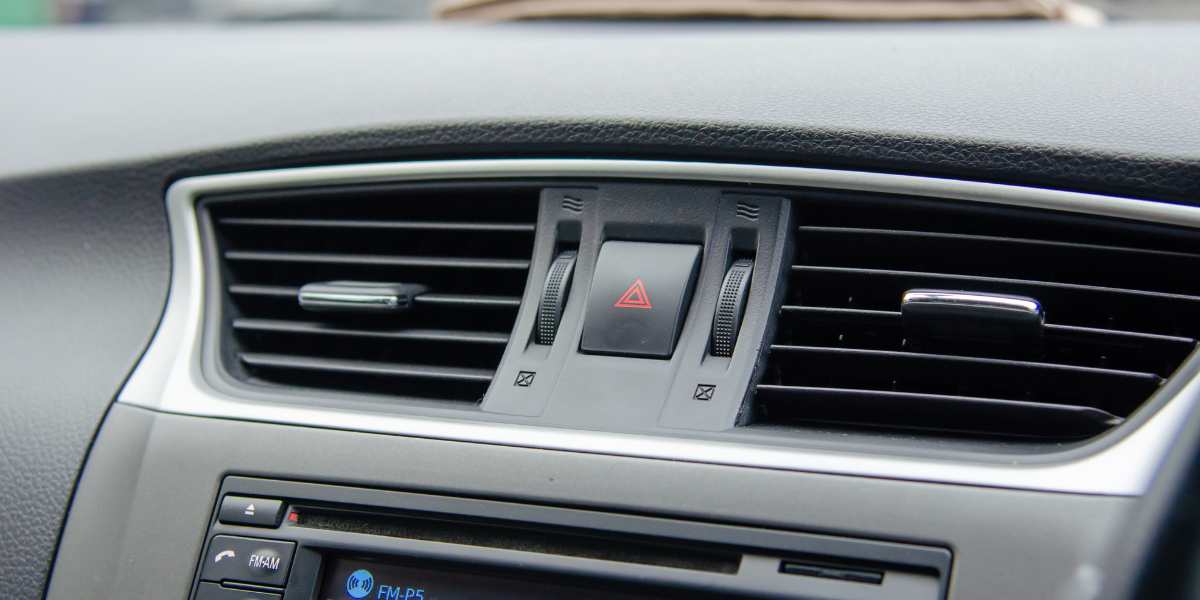Modern cars are technical marvels, integrating several intricate systems to guarantee efficiency, comfort, and safety. The air conditioning (AC) system is one of these critical systems, especially in hot climates or during the summer. However, how precisely does the air conditioning system in a car operate? This article thoroughly examines the parts, ideas, and procedures pertaining to car air conditioning.
The Basics of Air Conditioning
Heat exchange is the fundamental operating concept of an air conditioning system. It takes heat out of the air within the automobile rather than producing chilly air. The refrigerant, a unique fluid that efficiently absorbs and releases heat, is involved in this process. The car’s air conditioning system circulates this refrigerant via a closed loop, allowing for continuous cooling.
Critical Components of Car Air Conditioning System
The main parts of an automobile air conditioner, each of which is essential to the cooling process, must be understood to comprehend how it operates:
- Compressor: Often called the “heart” of the air conditioning system, the compressor is a pump belt driven by the vehicle’s engine. Its primary purpose is to compress the refrigerant to raise its temperature and pressure. The condenser then receives this high-pressure, high-temperature refrigerant.
- Condenser: Usually found next to the radiator at the front of the vehicle, the condenser dissipates the heat that the refrigerant absorbs and operates similarly to a radiator. The heated refrigerant cools and transforms from a gas to a liquid while still being under high pressure as it travels through the condenser.
- Accumulator or Receiver-Drier: Your automobile may feature an accumulator or a receiver-drier, depending on the kind of AC system (expansion valve or orifice tube). The receiver-drier is a tiny canister that collects moisture from the refrigerant by use of a desiccant. Moisture may damage the air conditioning system by leading to freezing problems and corrosion. Similar tasks are carried out by the accumulator in orifice tube systems, which also makes sure that only liquid refrigerant reaches the expansion valve.
- Expansion Valve or Orifice Tube: The high-pressure liquid refrigerant experiences a significant pressure drop at the expansion valve or orifice tube in specific systems), which causes a fast cooling effect. The refrigerant evaporates due to this cooling and returns as a low-pressure gas. The evaporator receives this gas, which is now chilly.
- Evaporator: A heat exchanger within the vehicle often situated behind the dashboard; the evaporator is where the cool refrigerant absorbs heat from the interior air. This heat is absorbed by the evaporating refrigerant, which cools the air that the blower motor subsequently forces into the cabin.
- Blower Motor and Fans: The motors and related fans circulate the cooled air throughout the car’s interior. Warm air from the cabin is drawn by the fans over the evaporator, where it is cooled before being sent into the vehicle.
- Refrigerant: The AC system’s refrigerant is its vital component. R-12, which is utilized in older cars, and R-134a, which is used in the majority of newer cars, are common refrigerants. Because R-1234yf has less of an influence on the environment, it is likewise becoming more popular. The cooling process depends on the refrigerant’s capacity to transition from gas to liquid and back again.
The Air Conditioning Cycle: Step by Step
After outlining the essential parts, let’s go over a regular air conditioning cycle:
- Compression: The compressor starts the cycle by compressing the refrigerant gas, raising its temperature and pressure. The condenser receives this hot and under-pressure gas.
- Condensation: The air passing over the condenser coils, sometimes with the help of a fan, takes heat from the refrigerant as the hot gas passes through the condenser. As a result of this heat exchange, the refrigerant condenses into a high-pressure liquid.
- Expansion: When the high-pressure liquid refrigerant reaches the expansion valve orifice tube, its pressure suddenly drops. As a result of this pressure reduction, the refrigerant rapidly cools, starts to evaporate, and transforms into a low-pressure, cold gas.
- Evaporation: Inside the car’s interior, the cold refrigerant gas enters the evaporator. The refrigerant absorbs heat from the pulled heated air from the cabin and cools the air as it passes over the evaporator coils. The blower motor then distributes this cold air throughout the cabin.
- Recirculation: After absorbing heat from the cabin, the refrigerant is now warmer and goes back to the compressor to start the cycle again. The inside of the car can be consistently cooled thanks to this ongoing loop.
Thermodynamics and the AC System
Understanding certain fundamental thermodynamic concepts is essential to understanding how the automobile air conditioning system functions:
- First Law of Thermodynamics: Energy cannot be created or destroyed; it can only be transformed from one form to another. Electrical energy from the engine is converted into mechanical energy in an AC system to operate the compressor. The refrigerant absorbs heat from the cabin air and releases it into the outside air.
- Second Law of Thermodynamics: Heat naturally flows from a hotter to a more relaxed body. This idea is used by the AC system, which uses the refrigerant to absorb heat from the warmer cabin air and release it through the condenser to the colder outside air.
- Phase Transitions and Latent Heat: A vital component of the cooling process is the refrigerant’s capacity to transition between liquid and gas phases. Latent heat, or the energy needed to alter a substance’s state without affecting its temperature, is either released or absorbed by the refrigerant during phase shifts.
Types of Car AC Systems
Car air conditioning systems come in two main varieties:
- Thermal Expansion Valve (TXV) System: This system controls the amount of refrigerant that enters the evaporator by using a thermal expansion valve. To maintain ideal cooling, the valve modifies the refrigerant flow in response to the evaporator’s temperature. TXV systems are frequently more accurate and productive.
- Orifice Tube System: This system controls the flow of refrigerant by using a fixed orifice tube. The orifice tube may lose efficiency in various situations because, in contrast to the TXV system, it does not modify the flow rate in response to temperature fluctuations. However, the cost of manufacturing these systems is lower, and they are easier to use.
Maintenance and Troubleshooting
The durability and optimum operation of your car’s air conditioning system depend on routine maintenance. Essential upkeep duties include:
- Levels of Refrigerant: It is important to ensure that the refrigerant levels are sufficient. Leaks can cause low refrigerant levels, which might cause partial failure or decreased cooling performance.
- Compressor Function: It is important to make sure the compressor is operating correctly. Leaks, unusual sounds, or insufficient cooling might be signs of a failed compressor.
- Condenser and Evaporator Cleanliness: Dirt and debris build up on them, decreasing their efficiency. Routine cleaning may avoid this accumulation.
- AC System Leak Detection: Leaks in the AC system may cause refrigerant loss. To ensure prompt car ac repairs, technicians utilize UV lamps and specific dyes to find leaks.
- Replacement of the Cabin Air Filter: The cabin air filter keeps the air flowing through the car clean. Regular filter replacement is recommended since a blocked filter can restrict airflow and put stress on the AC system.
Common AC Problems and Their Causes
Identifying and resolving typical problems with an automobile’s air conditioning system can be aided by knowledge of the following:
- Weak Airflow: Problems with the ducts or vents, a malfunctioning blower motor, or a clogged cabin air filter can all lead to weak airflow.
- Warm Air Rather Than Cold: This problem might be brought on by low refrigerant levels, a broken compressor, or a defective expansion valve or orifice tube.
- Unusual Sounds: Sounds like as grinding, hissing, or rattling may be signs of dirt in the system, a failing compressor, or refrigerant leakage.
- Bad Odors: Bacteria or mold development on the evaporator coils may be the source of unpleasant odours from the air conditioning system. Cleaning the system, which is frequently the result of moisture accumulation, may fix this.
The Impact of AC Use on Fuel Efficiency
Fuel economy is one key factor to take into account when utilizing an air conditioning system. Running the air conditioner puts more strain on the engine, which may result in higher fuel usage. The following variables affect how much of an influence this has:
- Engine Size and Power: When using the AC, larger engines could have a less noticeable decrease in fuel efficiency than smaller engines.
- Driving Conditions: Stop-and-go traffic, where the engine runs less effectively, significantly influences fuel economy while using the AC at high speeds or while travelling on the highway.
- Vehicle Type: Special considerations apply to electric and hybrid cars. The air conditioner can make the engine run more frequently in hybrid cars, lowering fuel efficiency. The AC system, which uses battery power, shortens the range of an electric car.
Environmental Considerations
An essential factor to take into account is how automobile air conditioning systems affect the environment. R-12 and R-134a, two common traditional refrigerants, are strong greenhouse gases with sizeable global warming potentials (GWPs). Newer refrigerants with significantly lower GWPs, such as R-1234yf, have been developed to remedy this.
Car manufacturers are also exploring greener options, like CO2-based systems (R-744), which don’t directly contribute to global warming. Proper maintenance and disposal of refrigerants are essential to reducing the environmental impact of automobile air conditioning systems.
The Future of Car Air Conditioning
Car air conditioning is expected to continue to improve in sustainability and efficiency in the future. Among the innovations might be:
- Advanced Refrigerants: It will be a priority to continue developing refrigerants that have less of an adverse effect on the environment and to create systems that effectively use them.
- Integrated Climate Control: Future cars may be equipped with more sophisticated integrated climate control systems, which integrate the heating, ventilation, and air conditioning systems to maximize comfort and economy.
- Better Sensors and Controls: More advanced sensors and control systems will enable more effective temperature and humidity adjustment within the cabin, improving comfort while using less energy.
- AC Systems for Electric and Hybrid Cars: As electric and hybrid cars proliferate, their particular needs will spur the creation of AC systems that reduce energy usage without sacrificing functionality.
In summary
The intricate and essential automotive air conditioning system keeps passengers comfortable by efficiently controlling the cabin’s temperature. Drivers may better grasp this system’s operation and maintenance by being aware of its essential parts, the thermodynamic principles at work, and the frequent problems that may occur.
Future cars will likely include air conditioning systems that are increasingly more clever, ecologically friendly, and efficient as technology advances. The automobile air conditioning system is essential to making any trip enjoyable, regardless of whether you’re travelling on a sweltering summer day or simply want a cold, comfortable ride.



